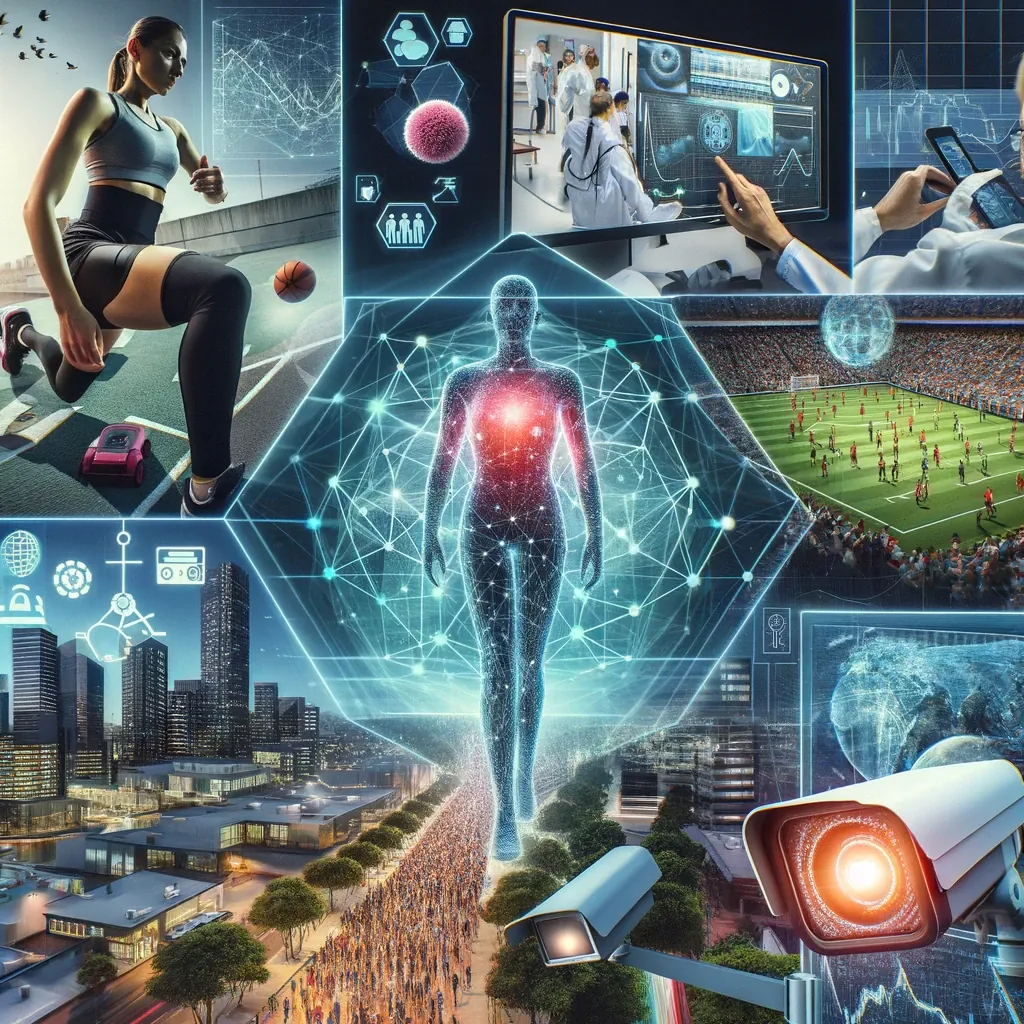
Real-World Applications of Spatial Dynamics in Machine Learning: From Sports to Surveillance
Explore the transformative applications of spatial dynamics in machine learning across various sectors. Discover how this technology optimizes sports performance, advances healthcare disease tracking, enhances surveillance security, and shapes smart urban planning for a more efficient and informed world.
The advent of Machine Learning (ML) and its incorporation into various fields has revolutionized how data is analyzed and utilized, particularly spatial dynamics. Spatial dynamics, an area focusing on the patterns and processes that shape the spatial dimension over time, has found a wide array of applications in modern technology. From enhancing athlete performance and preventing injuries in sports to bolstering surveillance systems for heightened security, the implications of spatial dynamics in ML are profound and multifaceted. This article explores these diverse applications, highlighting the transformative impact of this technology.
Contents
- Sports: Optimizing Performance and Injury Prevention
- Healthcare: Advancing Disease Tracking and Management
- Surveillance: Enhancing Security Measures
- Urban Planning: Shaping Smarter Cities
- Conclusion
- Further Reading
Sports: Optimizing Performance and Injury Prevention
In the realm of sports, ML models equipped with spatial dynamics are being used to analyze athlete movements meticulously. This analysis includes monitoring speeds, trajectories, and patterns of movement across the field or court. By leveraging spatial data, coaches and sports scientists can identify inefficiencies in movement, predict potential injuries, and tailor training programs to address specific needs. For example, soccer teams utilize heat maps generated from spatial data to assess player movements, enabling strategies to maximize coverage of the field and identify zones of weakness or strength. Moreover, wearable technology, like smart fabrics and biometric monitors, collects data on an athlete’s physiological responses during different spatial movements, providing insights into stress points and potential injury risks. This personalized approach to training, powered by spatial dynamics in ML, significantly enhances athlete performance while minimizing the risk of injury.
Healthcare: Advancing Disease Tracking and Management
Spatial dynamics in ML extend beyond sports, making significant strides in healthcare, particularly in disease tracking and management. Through the analysis of spatial data, ML models can identify patterns in the spread of diseases, predict outbreaks, and allocate healthcare resources more efficiently. For instance, during the COVID-19 pandemic, spatial dynamics models were pivotal in tracking virus hotspots and predicting the spread, guiding public health decisions and interventions. Additionally, in chronic disease management, spatial data helps in understanding environmental factors affecting patients’ health, enabling personalized healthcare plans that consider geographical and environmental variables.
Surveillance: Enhancing Security Measures
In the domain of security and surveillance, ML models imbued with spatial dynamics offer unprecedented capabilities. Surveillance systems equipped with these models can analyze spatial and temporal data to identify unusual patterns or behaviors, alerting authorities to potential security breaches or criminal activities. For instance, in crowded public spaces, these systems can track the flow of individuals and identify bottlenecks, unattended items, or unauthorized access to restricted areas. Similarly, in border security, spatial dynamics models can monitor vast stretches of land, detecting illegal crossings or smuggling activities. The automation and accuracy of these systems significantly reduce the reliance on human monitoring, ensuring a more secure and safe environment.
Urban Planning: Shaping Smarter Cities
The integration of spatial dynamics in ML has profound implications for urban planning and development. Smart cities leverage this technology to optimize traffic flow, enhance public transportation systems, and improve emergency response strategies. By analyzing spatial data, city planners can predict traffic congestion, plan efficient public transport routes, and identify optimal locations for infrastructure development. Furthermore, spatial dynamics models facilitate environmental monitoring, tracking changes in land use, pollution levels, and resource consumption, guiding sustainable urban development practices.
Conclusion
The applications of spatial dynamics in machine learning are diverse and transformative, stretching across various domains from sports and healthcare to surveillance and urban planning. By harnessing the power of spatial data, these ML models offer insights and solutions that were previously unimaginable, optimizing performance, enhancing safety, and paving the way for smarter, more efficient systems. As technology advances, the potential for spatial dynamics in ML to revolutionize even more sectors is immense, promising a future where data-driven decisions shape a better, more informed world.
Further Reading
- Artificial Intelligence and Machine Learning in Sport Research: An introduction for non-data scientists exploring AI and ML applications in sports. This article reviews the use of AI in team sports, including match outcome modeling, tactical decision making, and injury management ↗.
- Machine Learning in Team Sports: Performance Analysis and Talent Identification: A study on the application of ML in team sports for performance analysis, talent identification, and injury prediction ↗.